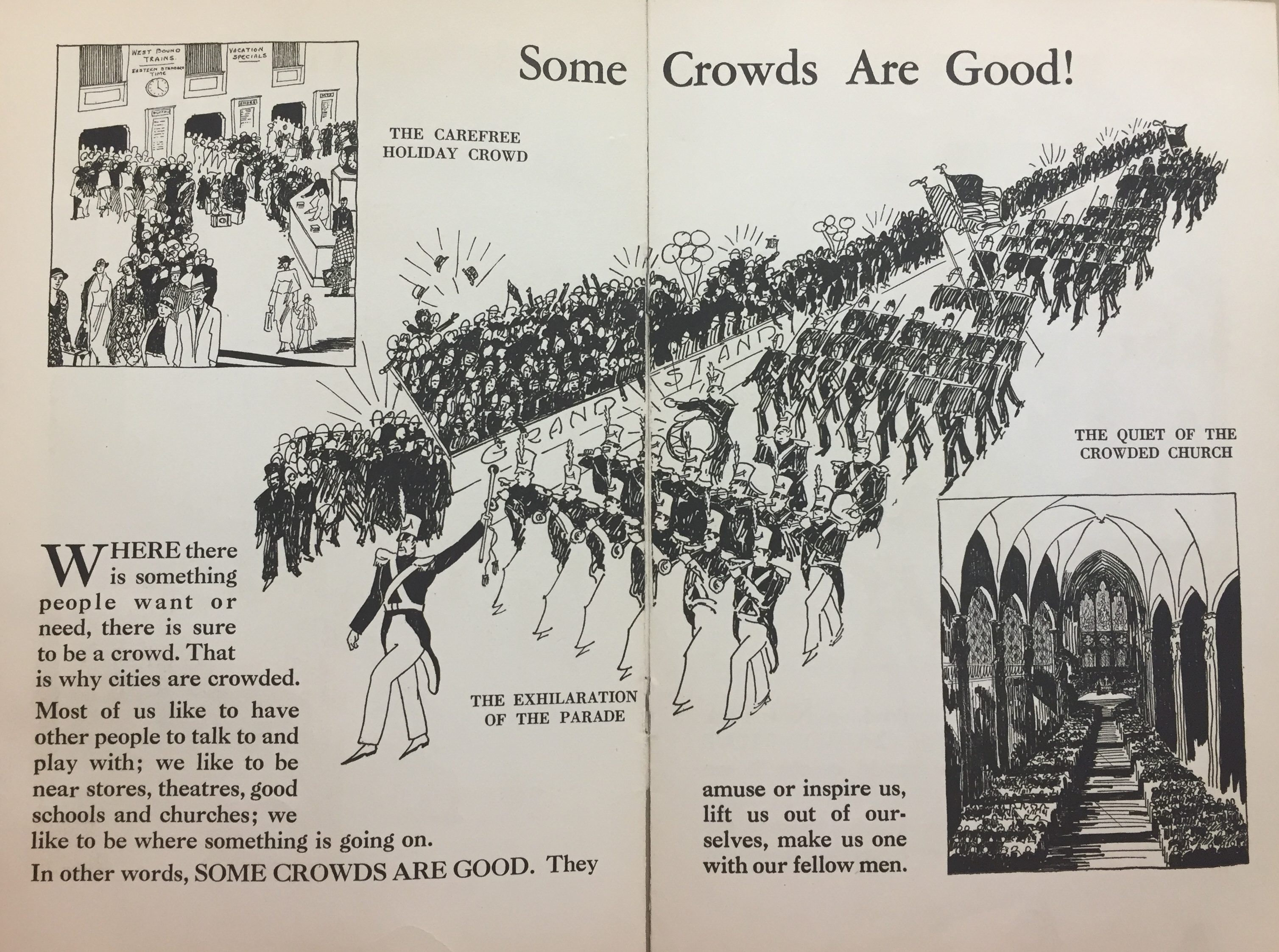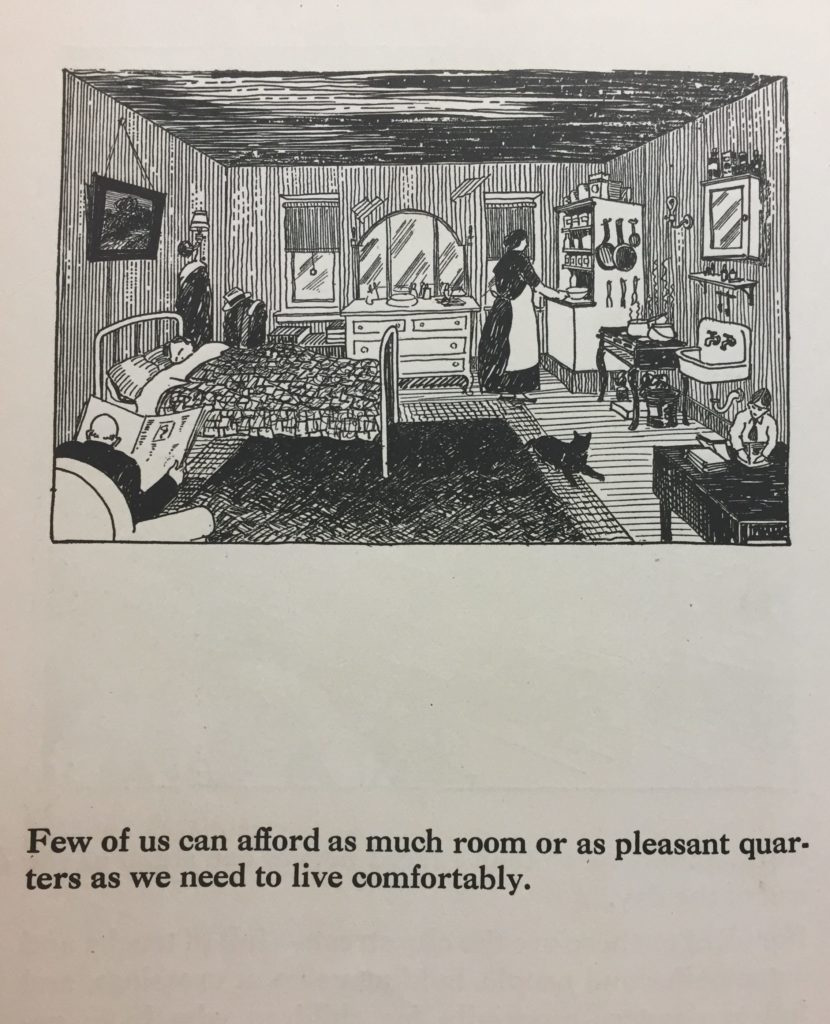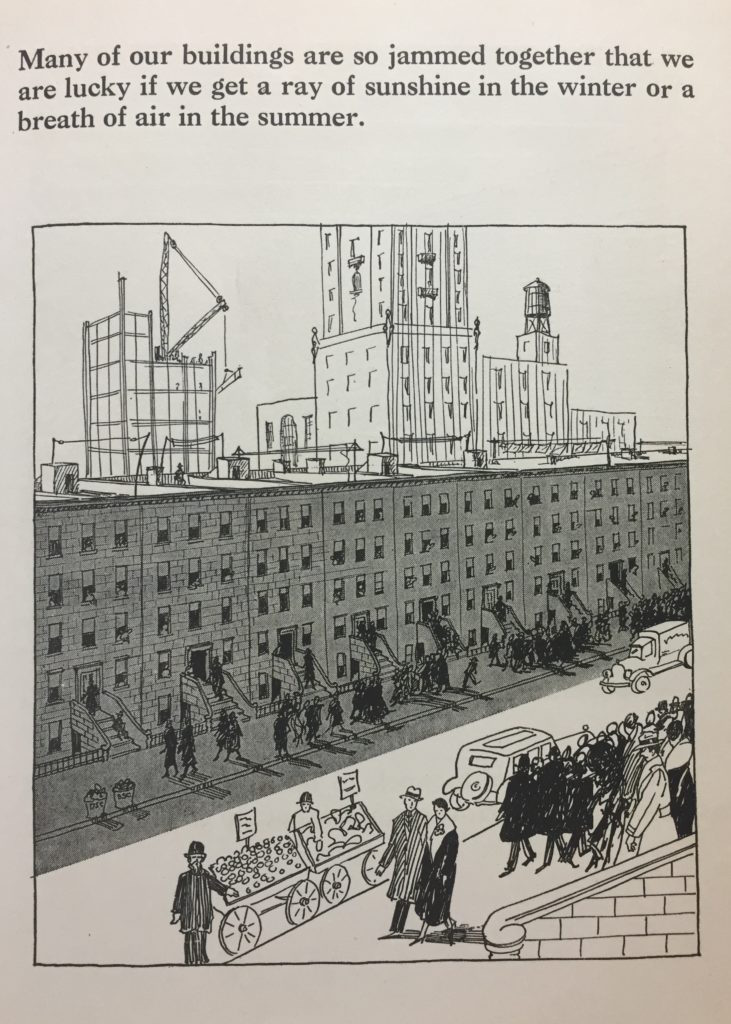Walking through the congested streets of Midtown, squeezing into a packed subway car or searching for an inch of open sand at a packed beach in the summer, New Yorkers are constantly surrounded by crowds.
Just as congestion in our parks and on our sidewalks concerns us today, frustration over crowding bothered our 1930s counterparts. So much so that in November 1932, the fledgling Regional Plan Association created an illustrated booklet on crowding in the city and what could be done about it.
It explained that some crowds, like the ‘carefree holiday crowd’ or the quiet of the crowded church, aren’t bad.

Just like today, there was crowding that was tough to tolerate:
“For most of us who have to earn a living there is the subway rush - terrific suffocating, tiring on the way to work, almost more than ragged nerves can stand at the end of the day. For all of us there are the city streets - full of trucks and automobiles and people, holding us up at crossings and full of danger - especially for children who have no where else to play”
And as if it were taken from today’s headlines, affording a decent space to live, finding bright public space among encroaching buildings and parks and beaches with room for everyone were major concerns of the 1930s New Yorker.



The early regional planners at RPA argued that through urban planning (and a good amount of urban sprawl) they could solve some of the “bad crowds” that New Yorkers regularly dealt with.
“Is all this dangerous, irritating uncomfortable crowding necessary? The Regional plan Association says IT IS NOT. Can we keep the good things of the city and get rid of the bad ones? The Regional Plan Association says WE CAN.”
Their key argument was that the solution to congestion and overcrowding in the city was regional (surprise, surprise). In the early 1930s, 11.5 million people lived in what was called “New York and its environs.” RPA estimated that there was enough land in the region as a whole that if every family wanted to live in a single family home on a 40 x 100 foot lot, that residential development would only take up 1/6th of the region’s overall footprint. With the First Regional Plan’s estimates of a possible regional population of 21 million residents by 1965, RPA argued this huge population could be accommodated “in but one third of the region, within 27 miles from the center, and all the rest of the land used of farming, forests and recreation.”
If the region has this much space, why then are we so crowded, the booklet asked.
“BECAUSE WE DO NOT MAKE GOOD USE OF THE SPACE WE HAVE. We are crowded now because our city was not wisely planned and because we have allowed some people to exploit their own interests above those of the community as a whole. If we plan wisely for the future, we and our children can still have all the room we need.”
